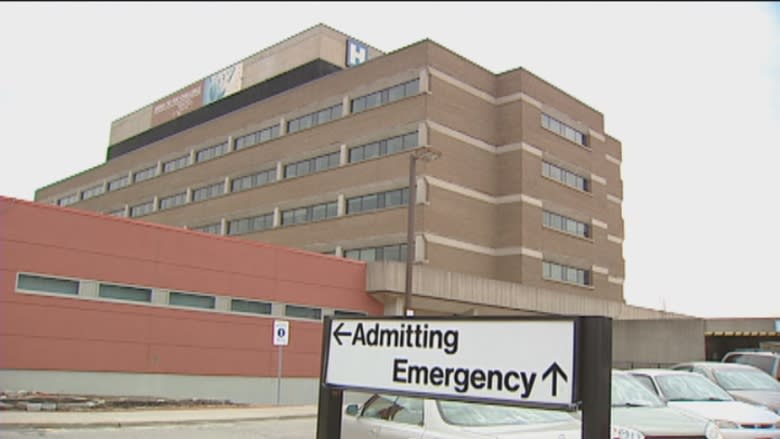Ontario hospitals face $100M in extra costs from Liberals' labour reforms
Changes to sick leave and holiday pay that kick in Jan. 1 are expected to cost the province's hospitals an additional $100 million next year, CBC News has learned.
The Ontario Hospital Association (OHA) will be seeking extra money to compensate for the new labour costs on Thursday, when its members make their pitch to the government for annual operating funding at Queen's Park. It's part of a requested funding increase totalling more than $1.1 billion to deal with overcrowding, inflation and growing demand for hospital services.
- Patients still in hospital hallways, despite province adding beds
The hospital association says at least $100 million of the increased costs are a direct result of the Wynne government's Fair Workplaces, Better Jobs Act, which takes effect on Jan. 1, 2018.
The bill's passage means "another significant cost pressure has been placed on the hospital sector," says a copy of the OHA's pre-budget submission, provided in advance to CBC News.
The legislation will push the minimum wage in Ontario to $14 an hour and requires all employers to provide staff with 10 days of personal emergency leave each year, including two paid days off. It will also force companies to pay part-time and casual workers at the same rate as full-time workers if they are doing similar jobs.
While the government's stated purpose was to improve the lot of vulnerable, low-paid workers, OHA chief executive Anthony Dale says the bill will have "unintended consequences" in unionized workplaces such as hospitals.
The bill's leave and sick pay provisions, as well as new rules on how statutory holiday pay is calculated, are the chief reasons for the additional costs, OHA officials say. They say employees, whose salaries and benefits make up 70 per cent of the cost of running hospitals, will expect to use these additional paid days off on top of the provisions in existing contracts.
The legislation "unintentionally added new costs to the hospital compensation structure, at a pivotal time when we simply don't have the resources to pay for those kinds of new expenditures," said Dale in an interview Wednesday with CBC News.
Earlier this week, CBC News asked Premier Kathleen Wynne if the province will provide funding to public sector agencies such as hospitals for additional labour costs.
"We're looking across government at the different agencies and the institutions to make sure that where there are costs that need to be borne that we find a way to support those," Wynne said.
The Fair Workplaces, Better Jobs Act also lays the groundwork for the minimum wage to rise to $15 an hour in 2019, should the Liberals or NDP win the election in June. The PCs would slow the increase, so that the minimum wage reaches $15 only in 2022.
Municipalities have already told the province they expect to see additional costs as a result of the legislation.
Health Minister Eric Hoskins said he has not yet seen any specifics from hospitals about the expected additional labour costs.
Many hospitals across Ontario are facing what they describe as an overcrowding crisis. Thousands of patients who don't actually need to be in hospital are clogging up acute care beds because they don't have long-term care or transition space available. The spin-off effect is that newly admitted patients get put in hallways or face lengthy waits for a bed on a ward, in turn choking space in the emergency room.
"Without action, patients will wait far too long in the emergency department and may even be redirected elsewhere because there simply isn`t any room," says the OHA's pre-budget submission.
Hospital operating funding was effectively frozen for a four-year period until last year's budget.
"We have added beds to the health care system," Hoskins said Wednesday during question period. "We have done that over the past years. We continue to do that this year. We'll continue to make those important investments going forward."




